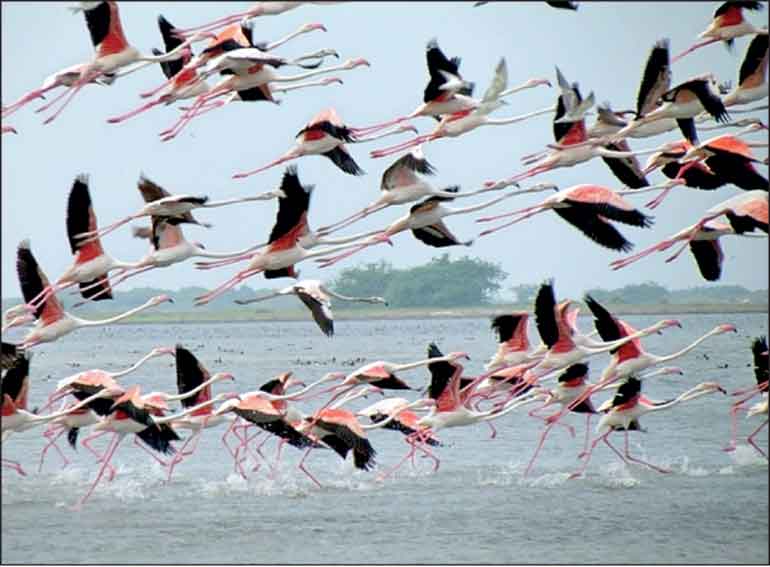Thursday Dec 12, 2024
Thursday Dec 12, 2024
Tuesday, 8 February 2022 00:00 - - {{hitsCtrl.values.hits}}

Yala crowd

Ella train selfie

Sinharaja Rainforest
 There have been rising incidents of visitors, both local and tourists, flocking to natural attractions in large numbers and behaving in an unruly manner disturbing and disrupting the natural beauty of the attraction itself. In addition, under the guise of being wildlife lovers and ‘conservationists’, many are resorting to unethical practices in wildlife photography, completely disturbing the fauna. This feature analyses the issues relating to this phenomenon.
There have been rising incidents of visitors, both local and tourists, flocking to natural attractions in large numbers and behaving in an unruly manner disturbing and disrupting the natural beauty of the attraction itself. In addition, under the guise of being wildlife lovers and ‘conservationists’, many are resorting to unethical practices in wildlife photography, completely disturbing the fauna. This feature analyses the issues relating to this phenomenon.
Introduction
Sri Lanka is truly blessed with numerous natural (and some ancient manmade) attractions, which draw a large number of visitors both local and foreign. It is the only country in the world where one can see the world’s largest terrestrial animal, the elephant, and the largest animal that has ever lived on earth, the blue whale, both in one and the same place. We have eight UNESCO world heritage sites, four UNESCO Man and Biosphere Reserves, six Ramsar wetlands in just 65,000 sq. km of land. And we are one of the 32 biodiversity hotspots in the world.
In fact, one wonders how this country is blessed with such a range of biodiversity and spectacular environments.
Naturally there is a great demand to see and experience many of these attractions, (some certainly much more than the others). Sri Lanka tourism also, quite understandably, promotes most of these attractions to market the country as a diverse tourism destination.
Unfortunately, the very popularity of these attractions often leads to over-visitation and overcrowding, which in turn fuels environmental destruction.
The price of over-visitation, unethical and dangerous practices and harassment of animals
Due to the large number of visitors to popular attractions, there is bound to be environmental damage. This was very aptly highlighted to me once by Dr. Sarath Kotagama, who said that each time you place your foot in the Sinharaja forest, you damage a whole tiny ecosystem. So, it is easy to imagine what hundreds of footsteps will do! Similarly in many other sites such environmental damage occurs, albeit unknowingly by visitors.
However more serious is the environmental and biodiversity damage that is caused by the wanton misbehaviour of visitors. Let’s take a few examples.
|
Elephant being harrassed
|
Sigiriya rock fortress
In 2018 (the best year on record for Sri Lanka tourism) there were 594,917 foreign visitors to Sigiriya which brought in revenue of Rs. 2,746,939,936. In the same year 766,815 locals visited the rock bringing in revenue of Rs. 33,256,875 (SLTDA 2018 annual report). This translates into over 3,700 visitors per day. (It is noted that locals far outnumber the foreigners.) How can such an attraction, with poor visitor management facilities and infrastructure, manage such a large influx of people? Surely the environmental damage would be extremely catastrophic.
Several years ago, vandals defaced some of the priceless paintings of the fifth century on the mirror wall. It was a deliberate act of destruction which thankfully was restored to some degree with help from the Smithsonian Institute.
Yala National Park
Undoubtedly the Yala National Park is by far the most popular wildlife attraction in Sri Lanka. In 2018 there were a total of 629,246 visitors out of the local to foreign visitors were almost even (50%). However, the revenue from foreigners at Rs. 685 million far exceeded the revenue from locals which was only Rs. 19 million.
The resulting problems at Yala are well-documented and there has been vast disruption to the animal life due to the unethical behaviour of visitors. Almost daily we hear of unruly visitors disturbing and harassing animals, and even going to the extent of trying to feed them. Due to this, and the gross overcrowding, Yala, the ‘Golden Goose’ of Sri Lanka tourism is fast losing its popularity with much negative feedback seen on international travel sites.
Wild elephants harassed on roadways
Apart from overcrowding in national parks causing stress to animals, there are several incidents being reported of people harassing animals on roadsides. These animals are forced out of their normal habitats due to lack of food and pressure from misbehaving visitors.
A recent video clip, proudly circulated on social media showed a jeep being driven straight at a wild elephant peacefully minding its business at a roadside. The poor animal is virtually pushed back quite a distance by the advancing jeep, with the occupants gleefully laughing.
Of course, feeding wild elephants by the roadside is rampant especially deep down south, and has become a favourite ‘pastime’ of both Sri Lankans and foreign tourists. By feeding these wild animals, one is getting them acclimatised to begging for food (through learned behaviour). Eventually there is bound to be a serious altercation, as these are still wild animals, and at the end of the day, the poor animal will be at fault. There is also the very real risk of transmitting human germs through such food to the animals, whose immune system may not be able to withstand the potential infection.
Nine Arches Bridge
This scenic manmade viaduct railway bridge, in Demodara situated close to Ella is attributed to a Sri Lankan engineer, (as is the unique ‘Demodara loop’, where the railway line was ‘looped around’ under the Demodara station, so as to enable the required gradient to be maintained) has become a popular attraction, both to locals and tourists. However, the vast crowds who throng the location are undisciplined, walking all over the railway lines and bridge, most in search of some ‘exciting’ photo opportunities.
Some of these practices are out rightly dangerous, and could lead to serious injury or fatalities. Currently there is no one around to enforce any rules and regulations, although it should be the responsibility of the Department of Railway Department.
The scenic upcountry train ride
The railway journey into the hill country is very scenic, and especially the stretch between Nanu-Oya to Ella has become vastly popular with Tourists. This is mainly for the exciting photo opportunity they get by hanging out of the slow-moving carriages, (something that cannot be done in most developed countries.) In fact, some travel agents say tourists inquire about this ‘experience’ when booking their holiday to Sri Lanka. Of course, this like the earlier example, was a disaster waiting to happen, which unfortunately did, last week. A young French tourist couple were badly injured when taking such a ‘selfie’ on the train, not noticing the oncoming tunnel.
Mannar – Unethical wildlife photography
There are now many newly-emerged so called ‘wild life photographers’, armed with fancy equipment running riot in search of spectacular award winning photographs. Of late there has been a large ‘migration’ of such so-called Sri Lankan ’wildlife lovers’ to Mannar, almost overshadowing the great bird migration that happens there. These persons are clueless about environment and conservation, and do not understand the delicate environmental balance that prevails in the salt plains of Mannar, which is the first resting point for the seasonal bird migration from the northern hemisphere.
There are recent documented reports of such and l photographers using drones and unethical practices, to get unique pictures, and disturbing the feeding flamingo flocks. These birds are very shy and not at all acclimatised to people, and will be disturbed by the slightest noise or movement. Flamingo observation and photography therefore require immense patience.
So, who is responsible?
Most of the above problems are almost always laid at the doorstep of the Department of Wildlife Conservation (DWC) or some other government agency, and perhaps quite rightly so. However, when one analyses most of these incidents there seems to be a common underlying thread.
So, it is very clear that it is our own Sri Lanka fellow citizens who are wreaking this havoc on our beautiful and precious environment and nature. Like most aspects of our life currently, it appears that fundamentals of ethics, morals and decency have disappeared in society. Wide spread corruption and fast track ill-gotten riches has resulted in the degradation of these values.
It is no surprise therefore, that respect for environment, nature and wildlife is now non- existent among a greater proportion of our population.
Hence is it correct to lay all the blame for this sorry state of affairs on the DWC and other State agencies? True there is much that the DWC needs to do. They have to stop being subservient to politicians, and start ‘protecting wild life’ as they are mandated, and not to safeguard misbehaving people. But in our politicised climate, this is easier said than done.
So, should we not look ‘inwards’ and realise that it is our own people who are causing this wanton damage?
What then needs to be done?
It is fundamentally a complex sociological problem that would need a multi-pronged approach to put right.
 Conclusion
Conclusion
For far too long, all of us who love and appreciate Sri Lanka’s nature, wildlife and environment, have been pointing fingers at the state authorities to solve the problems that our own countrymen are perpetuating.
It’s high time we take responsibility for our national treasures, and do something about the damage that is being caused, to at least mitigate some of these issues.
I do sincerely hope that this write up will spur several like-minded people and organisations to ‘rise up to the occasion’ and give serious thought to discuss further, and pursue the implementation of one or more of the ideas I have mentioned.

Nine Arch Bridge

Disturbed flamingos

Sigiriya crowd

Sigiriya defaced

Demodara tunnel